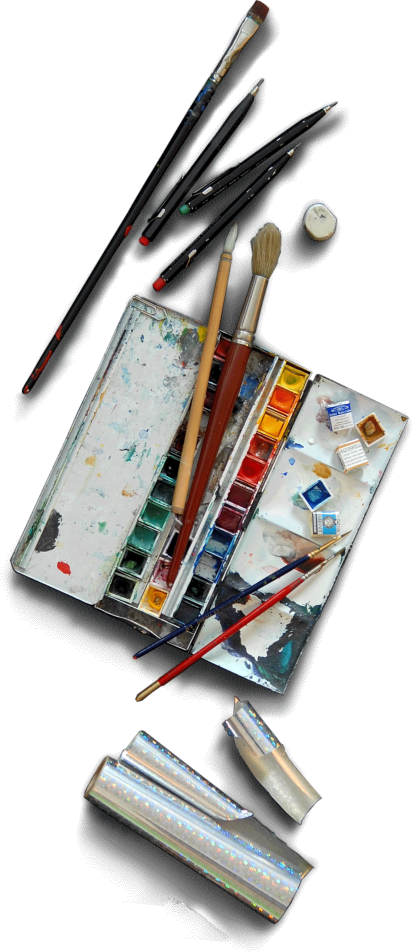It was Brigitte Sidjanski, the founder and former reader of North-
South, who asked me in the first years of our collaboration again
and again to do something similar, like my first book “The Sleepy
Owl”. This book had been published in 1986 and Brigitte really
enjoyed it. But what did it mean to make a similar book? A sequel
was impossible - so the story had to be a completely different one.
The technique of the illustrations and some artistic details could
have been adopted - but what else?
If the book should have something in common with “The Sleepy
Owl”, the character had to resemble to this bird. I didn’t want to draw
another bird, but which other animal could look like a bird? I couldn’t
come up with a solution to this problem and I wanted to abandon the
project once more, when one day by chance, “The Sleepy Owl” was
lying next to my desk.
That was it! The typical, stylised bird feathers became scales and
the colorful owl became a colorful fish. In the end this was the only
thing that these two books had in common - at this moment, the
“Rainbow Fish” was born. Starting with this multicolored fish, I
developed the idea to make it the most beautiful fish in the entire
ocean. In the beginning still proud and really vain, and then the
lonely fish experiences the joy of sharing. If his dress, of colorful
scales, would have remained the only particularity of the Rainbow
Fish, all the other fish would have to be grey and pale.
Therefore I looked for another distinctive characteristic for
my leading character. I wanted to be able to distinguish him
from the others and to underline the value and uniqueness of
the shiny scales he presents to the others.
Holographic foil stamping seemed to me to be the ideal
solution. I knew this technique from my work as a graphic
designer. The shiny effects completed the story in a wonderful
manner and made the feelings of Rainbow Fish really
understandable to children and parents. To give away just a co-
lored scale would not have been that spectacular. But giving away
really sparkling scales - that was something else! I guess the foil
for children was just beautiful and attractive, whereas for adults it
symbolized money and richness.
Now it was up to the editor to settle all the technical details. The
costs of production were, in the end, almost double that of a nor-mal
picture book. However my former editor, Davy Sidjanski, deci-ded to
take the risk and to publish the book with the shiny foil.
Even with all the technical problems that had to be solved and the
cost of production no one expected the extraordinary success of the
book that was to come.
I was just happy, that it was possible to print my book in the way I
imagined from the beginning. But soon it became clear, that the first
printing of 30’000 copies wouldn’t be enough.
And so the 30’000 copies rose to more than 3 millions in the first
three years, due to the huge support of teachers, booksellers,
parents and children all over the world.














Back to the top






Rainbow Fish has no political message.
The story only wants to show us the joy of sharing. We all
enjoy making presents for Holidays or birthdays and the warm
feeling it gives us when we do so. I want to show children the
positive aspect of sharing: To share does not only mean to
give away something (what is quite hard for a child), but above
all to make someone else happy– and themselves happy by
doing it.








